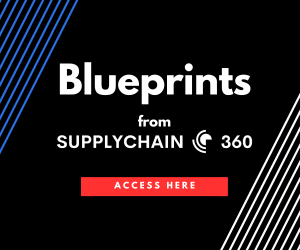Generative AI’s Role in Modernizing Supply Chains
GenAI is reshaping the logistics landscape, delivering transformative value through automation, efficiency, and data-driven decision-making. DHL Supply Chain, a global leader in contract logistics, is at the forefront of this movement, deploying AI-powered tools that enable faster, smarter, and more accurate transportation solutions.
As the complexity of supply chain operations grows, leaders are turning to GenAI not just to streamline processes but to unlock significant competitive advantages. A 2024 Gartner survey revealed that 17% of supply chain leaders now prioritize GenAI projects, further underscoring its growing relevance in digital transformation strategies.
DHL’s GenAI Tools for Optimized Transportation Routes
DHL Supply Chain has implemented a suite of GenAI applications designed to simplify data management and accelerate logistics planning. A standout tool enables the company’s design engineers to clean and analyze customer-submitted data, significantly reducing the time spent preparing information for route optimization. With manual bottlenecks removed, engineers can quickly design optimized transportation routes that lower costs, reduce lead times, and enhance overall customer satisfaction.
This capability is part of a broader initiative to integrate GenAI into DHL’s logistics workflows, including tools that assist with sales proposal development by analyzing RFQs and gathering supplementary data. These efforts ensure that customer-facing solutions are both data-driven and highly tailored to individual business needs.
The value of AI-driven transportation route optimization is far-reaching. Beyond cost and time savings, it enables logistics providers to adapt more flexibly to demand changes, support sustainability initiatives through reduced emissions, and improve service reliability in an increasingly dynamic market. Organizations exploring similar initiatives should consider how such tools can drive immediate operational gains while positioning their businesses for long-term growth.
A Roadmap for Implementing AI-Optimized Transportation Solutions
Define high-impact use cases and business goals: Start by identifying transportation challenges where AI can deliver measurable improvements. These could include cost reduction in specific lanes, optimizing multi-stop routes, or mitigating inefficiencies in last-mile delivery. Ensure the goals align with broader organizational objectives, such as sustainability, service differentiation, or capacity management.
Audit and enhance data infrastructure: Data is the backbone of any AI project. Evaluate the quality, accessibility, and integration of your data sources, including freight volumes, historical transit times, and customer demand patterns. Address gaps by implementing robust data governance practices, integrating siloed systems, and ensuring compatibility with AI platforms.
Design and prioritize pilot projects: Begin with a contained pilot that tests GenAI in a specific transportation function, such as optimizing delivery routes in a high-volume market. Set clear KPIs to measure success, such as reductions in delivery times, cost per mile, or emissions. Use these insights to refine the technology and build internal confidence in AI’s capabilities.
Collaborate across cross-functional teams: Engage stakeholders from operations, IT, and sales to ensure AI tools address both internal efficiencies and customer requirements. Team leaders should act as champions of the initiative, bridging the gap between AI-driven insights and on-the-ground execution.
Invest in talent and upskilling: Build internal capabilities by training employees on AI tools and analytics. Develop programs for engineers, logistics planners, and IT specialists to understand how to manage, interpret, and act on GenAI-driven insights. Partner with universities or tech providers to access training resources and stay ahead of emerging trends.
Deploy iterative rollouts for scalability: Once the pilot project achieves its KPIs, scale the solution across other business units or geographies. Use an iterative approach to refine models, incorporating feedback from employees and customers. Integrate AI tools seamlessly with existing transportation management systems to enhance usability.
Monitor performance and evolve strategies: GenAI tools require constant refinement to remain effective. Establish monitoring frameworks to track performance metrics such as cost savings, service levels, and delivery reliability. Use this data to adjust models, improve algorithms, and expand capabilities over time.
Build a culture of innovation: Encourage an organizational mindset that embraces change and sees AI as an enabler of growth. Share success stories across teams and foster open dialogue about future applications of the technology.
Realizing the Full Potential of AI in Logistics
DHL Supply Chain’s success with GenAI underscores its transformative potential in logistics, particularly in optimizing transportation routes. By automating time-consuming tasks and delivering actionable insights, these tools enable logistics providers to improve efficiency, enhance customer value, and adapt to changing market demands.
Adopting GenAI begins with clear objectives and a structured implementation strategy. By investing in high-quality data, cross-functional collaboration, and scalable solutions, organizations can unlock the full value of AI-powered logistics, positioning themselves for long-term success in a competitive global market.








